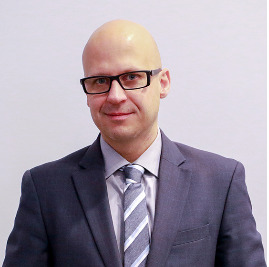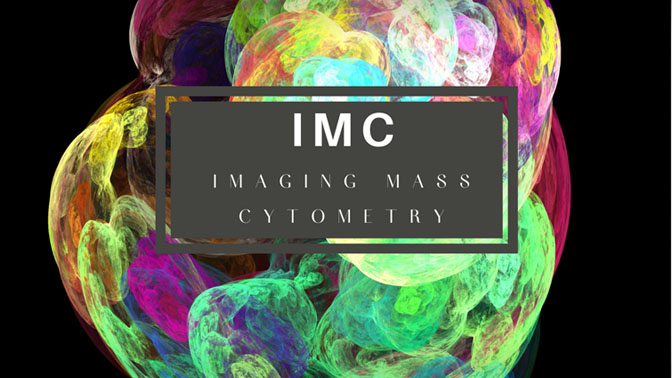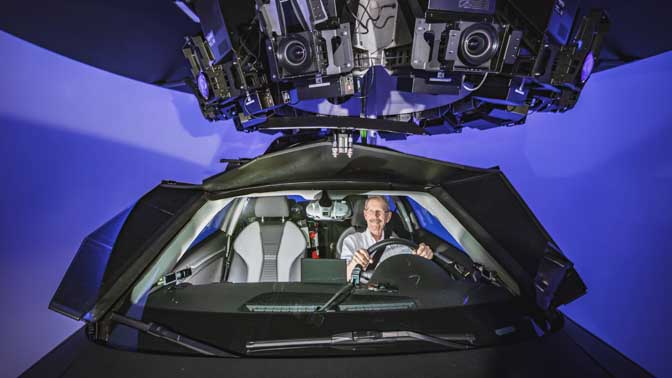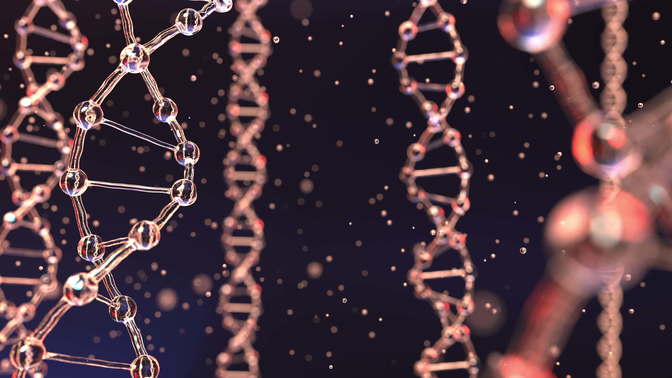UHN Research & Innovation Cores Newsletter
Dear Readers,
Welcome to the third issue of UHN Research & Innovation Cores Newsletter.
In this edition, we take an in-depth look at a facility that provides access to a new technology known as Imaging Mass Cytometry - a high content single-cell analysis, in which fluorescent tags are replaced by isotopes that are detected by mass spectroscopy.
Also featured are stories about DriverLab at the KITE Research Institute, which is the most sophisticated driving simulator of its kind in Canada, and the Advanced Molecular Diagnostics Laboratory (AMDL) facility, which is a CAP/CLIA-certified clinical laboratory that provides high complexity molecular diagnostic clinical test services.
UHN Biobank takes the spotlight in this edition as we get a glimpse of their multi-disciplinary team and the wide array of services that they have to offer. Head to the article to discover more about the role biobanks play in the development of translational research, technological advancement and innovation.
Thanks for reading our newsletter!
Luke Brzozowski

UHN Research & Innovation Cores
Imaging Mass Cytometry Technology at UHN

Imaging Mass Cytometry (IMC) is a high content single-cell analysis, in which fluorescent tags are replaced by isotopes that are detected by mass spectroscopy.
Images reconstructed from IMC resemble multispectral fluorescence microscopy, but without any fluorescence spillover. This allows the measurement of more than 50 analytes in a single multiplexed image. IMC is therefore an extremely powerful technique for studying complex cellular processes and interactions at the intact tissue level. It is readily applied to paraffin sections and can thus be used for a wide range of applications. Although cancer is the main focus of IMC research, the technique is a powerful approach for studying non-malignant diseases states, and basic research in areas such as developmental biology and plant science.
The IMC research core facility is located at 610 University Avenue (room 9-713). The staff has expertise in sample preparation (note: sample sections are prepared in the adjacent AMPL laboratory), instrument setup, image acquisition and storage. The facility offers a consultation service for the design of experiments, including new and under-explored applications in fields such as cell signaling networks, metabolism and clinical trials. This service includes expertise in antibody conjugation, and the design of complex antibody panels.
DriverLab: Empowering Vehicle Research at UHN

Every year, roughly 1.3 million people die in car accidents worldwide—an average of 3,287 deaths per day.
UHN, true to its purpose of Transforming lives and communities through excellence in care, discovery and learning , is advancing research and solutions that reduce vehicle collisions and the associated emotional, physical, and financial costs.
This work is being led by The KITE Research Institute, which is home to DriverLab . This state-of-the-art driving simulator is enabling researchers to evaluate modern car safety systems and design, semi-autonomous vehicles and driverless cars. As well, the lab is being used to explore the impact of health and medications on driving performance, with an aim of increasing driver safety in healthy older adults and people living with injury or illness.
Despite a decrease in traffic by 60 percent due to the pandemic, over 40 percent of all fatal car accidents still occur at night. The current “gold standard” of on-road testing typically occurs during clear daytime conditions that do not realistically mimic the challenges that drivers face. To address this issue, DriverLab offers a unique feature that produces real rain droplets on the windshield, and a glare simulator that recreates the harsh glare of oncoming headlights at night and during poor weather. KITE DriverLab is the only simulator of its kind in Canada and is among the most sophisticated driving simulators in the world.
Advanced Molecular Diagnostics Laboratory (AMDL) at UHN

The field of molecular biology and its clinical application in analyzing human genes has continued to advance and change the world of laboratory medicine. Today, molecular diagnostics offers powerful tools for earlier and more accurate detection of disease, and has a key role in supporting the emerging field of personalized medicine.
The AMDL’s primary mission to support clinical trials and translational research projects requiring clinical-grade (CAP/CLIA) molecular testing at Princess Margaret (PM) Cancer Centre. Located on the 7th floor at the PM Cancer Centre, AMDL is led by Dr. Tracy Stockley, a CCMG/ACMG certified clinical laboratory molecular geneticist. AMDL provides a high level of expertise to transition protocols into clinical tests, and operates under stringent quality management, with ongoing staff training and competency assessment, external blinded proficiency testing challenges, and CAP inspections biennially.
Since 2011, over 20,000 samples have been processed at AMDL from PM Cancer Centre studies and external clients. As a CAP/CLIA certified lab, AMDL techniques and technologies focus on genetic methods that are in use, or near to use, in clinical diagnostic laboratories. The AMDL team continually seeks ways of improving the information benefit derived from molecular profiling, as well as ways to apply new genomic testing methodologies in the diagnostic setting. New molecular profiling tests are designed, optimized, validated and developed for clinical implementation according to a rigorous set of community-standard and internal guidelines. To enable the development of new tests, AMDL also trials new technologies, instrumentation and platforms.
AMDL is currently supporting researchers at UHN on a number of different projects and clinical trials. Tests launching at AMDL in 2021 include the TruSight 500 NGS panel, a pan-cancer next-generation sequencing panel for comprehensive tumour molecular profiling of more than 500 genes and including tumour mutation burden (TMB), microsatellite instability (MSI), and detection of gene fusions. AMDL is also supporting many studies testing circulating cell free DNA for cancers, and those using molecular platforms for determining polygenic risk scores in cancer. The laboratory staff are always happy to discuss new ideas for testing and how AMDL can support the mission of PM Cancer Centre.
In the Spotlight: Princess Margaret Cancer Biobank

In alignment with 2019-23 UHN research strategic plan, and in order to integrate resources and reduce duplication of efforts, we are excited to announce that the UHN Biobank has rebranded to Princess Margaret Cancer Biobank . The biobank will continue to serve the research community, enabling research that positively impacts clinical management and outcomes.
PMCB was first established in 2001 when different disease site groups, in coordination with UHN pathologists, saw an unmet need. As of today, PMCB has supported over 100 clinical trials ranging from single-site investigator-initiated pilot studies to large-scale industry-sponsored studies. With hundreds of thousands of samples collected, the PMCB is meeting the demands of researchers—at UHN and internationally—that are focused on a wide array of disease areas.
PMCB has an extensive biospecimen inventory to support retrospective oncology studies. Fresh, frozen and fixed paraffin embedded (FFPE) surgical resection tissue and biopsies, blood derivatives (serum, plasma, whole blood, peripheral blood mononuclear cells) and various other body fluids (saliva, urine, stool) as well as their associated clinical data are collected in order to drive cutting edge research for the understanding, detection, prevention and ultimately the cure of cancer and other diseases.
Spotlight: Heidi Wager- Head of Operations
PMCB is led by the Medical Director Dr. Neil Fleshner , the Head of Operations Heidi Wagner , and the Scientific Advisor Dr. Hal Berman . Heidi has been spearheading the program since February 2020. With background as an assistant pathologist, and over a decade of experience in leading large centralized biorepositories in both Canada and the United States, she has a unique perspective that allows her to understand both clinical and research requirements and processes. With her team at Princess Margaret Cancer Biobank, she has developed leading edge infrastructure that enables the efficient distribution of high-quality biospecimens to meet expanding demand.
The Future
Building on the UHN national & international reputation as a leading edge research institution, PMCB biobank aims to become a world leader in biobanking activities. By constantly improving, optimizing and streamlining operations, the facility is ensuring efficient biospecimen procurement, banking and distribution to anticipate and meet both local and global research needs.
